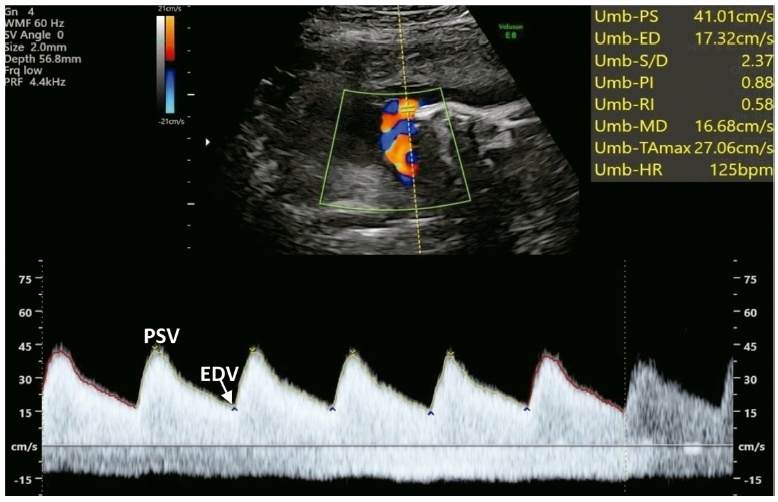Summary
. 2022;44(5):519-531
To provide a survey of relevant literature on umbilical artery Doppler ultrasound use in clinical practice, technical considerations and limitations, and future perspectives.
Literature searches were conducted in PubMed and Medline, restricted to articles written in English. Additionally, the references of all analyzed studies were searched to obtain necessary information.
The use of this technique as a routine surveillance method is only recommended for high-risk pregnancies with impaired placentation. Meta-analyses of randomized trials have established that obstetric management guided by umbilical artery Doppler findings can improve perinatal mortality and morbidity. The values of the indices of Umbilical artery Doppler decrease with advancing gestational age; however, a lack of consensus on reference ranges prevails.
Important clinical decisions are based on the information obtained with umbilical artery Doppler ultrasound. Future efforts in research are imperative to overcome the current limitations of the technique.

Summary
. ;:137-143
DOI 10.1590/S0100-72032001000300002
Purpose: to study, in high risk pregnancies with cerebral redistribution of blood flow, the fetal surveillance and perinatal outcome, according to umbilical artery dopplervelocimetry. Methods: a total of 717 high-risk pregnancies attended at the Fetal Surveillance Unit were included. The last examination performed until 72 h prior to delivery was taken into account. Multiple gestations and fetal anomalies were excluded. The redistribution of blood flow was diagnosed if the pulsatility index of middle cerebral artery was below the 5th percentile for gestational age. The umbilical artery dopplervelocimetry was abnormal when A/B ratio was more than the 95th p. Results: in the group with normal umbilical artery dopplervelocimetry (560 cases -- 78.1%), significant correlation was found only between redistribution of blood flow and suspected or abnormal cardiotocography (17.1%). In the group with abnormal umbilical artery dopplervelocimetry (157 cases -- 21.9%) we found significant correlation between redistribution of blood flow (105 cases -- 66.9%) and cardiotocography abnormalities (57.2%), abnormal 1st(43.8%) and 5th (12.4%) minute Apgar scores. In these cases, the mean values of gestational age at delivery (34.4 ± 3.6 weeks), birth weight (1,810.5 ± 769.3 g), and pH at birth (7.20 ± 0.1) were significantly lower. Conclusion: The redistribution of fetal blood flow characterized by means of middle cerebral artery dopplervelocimetry is related to perinatal results when some level of placental insufficiency occurs, and does not present association to perinatal outcome when pregnancy shows normal fetal-placental blood flow.